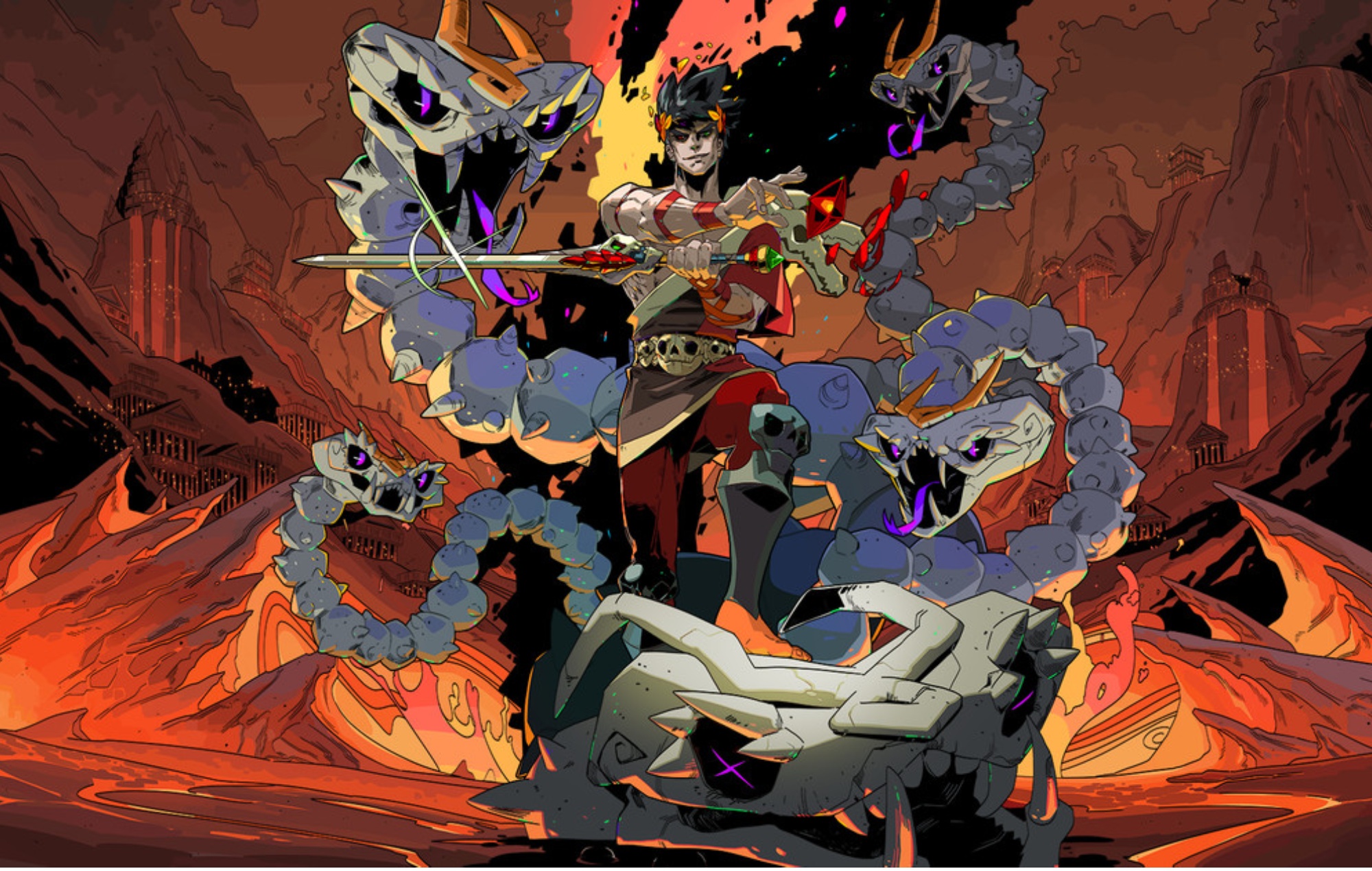Already hailed a masterpiece on Switch and PC, Hades launches on PlayStation and Xbox this week. Is it as good as they claim, or does this hype have no substance? The Finger Guns Review:
In 2019, before Hades was known outside of early access, a game called Children of Morta sort of blew my mind. It was a roguelite with a story, demonstrating for the first time that a) this was possible, and b) that it allowed for an entirely new and unique way of telling narrative. The story came in bitesize pieces each time you completed or died on a run, building and building as you went on run after run.
Just a year later Hades burst onto the scene, an isometric roguelite dungeon crawler that had that very same ambition. It blew a lot of people’s socks off and won a lot of awards. At its core, it’s a roguelite, familiar to any gamer who’s been active in the scene in the last decade. They’ve been everywhere. But it was part of this emerging new breed – a roguelite that seemingly sets the new standard for using story to explain why you go on the runs themselves, featuring an actual character with which to identify, and bitesize narrative morsels to reward you every time you come back to the hub. Hades builds up a fantastic tale of interwoven Greek mythology in tiny chunks cushioning the blow every time you die and giving purpose and meaning to every attempt.
We’re now another year on and where Hades was a Switch and PC exclusive, it’s now available to all on all major consoles. PS5-owners also had the exclusive Returnal this year, taking the narrative roguelite baton and adding time loops and AAA production values. What a time to be a roguelite fan. What a time to become one if you’re a narrative fan. The future is bright for story-led roguelites.
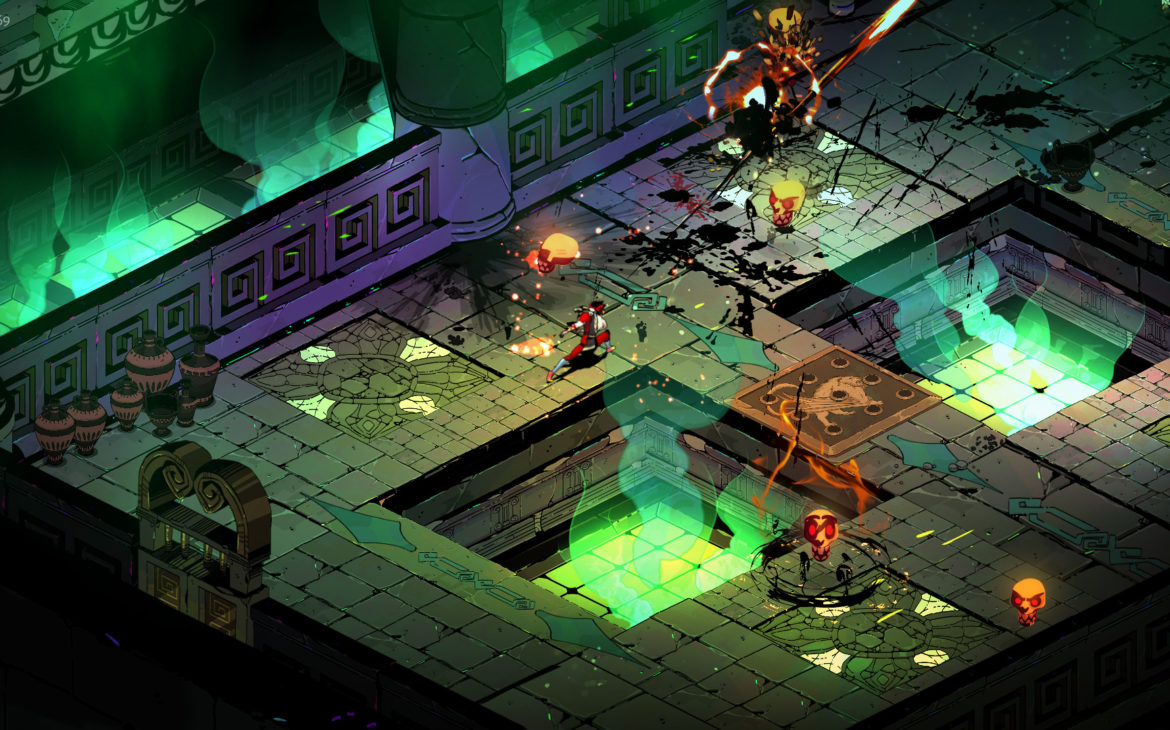
Hades Lord of the Underworld
So for me, this new way of telling stories is why Hades is so exciting. It’s not every day that we can talk about an almost entirely new way of structuring narrative, nor one that is almost completely unique to the roguelite genre. In roguelites you are generally trying to complete either the entire game, or a large section, without dying, and if you die, you go back to the start. There’s no continuing, there’s no saving as you go. One chance only. But crucially you keep most of the things you earned, and you can progress towards becoming tangibly stronger each run.
But herein lies the beauty as seen by just a few narrative-minded developers. Each time you die and go back to the hub world, you reveal a little more story, have a conversation that’s different based on your actions, and allow the plot to progress based on how many times you attempted the game. They are building into the narrative the gamification of the game itself. It’s both linear, and not linear at the same time. The immortality of your character, the fact that they can come back over and over, is the conceit of videogames, but you can make that constant retrying of the same goal into the plot itself.
So how is this set up in Hades? You play as Zagreus, Son of Hades, heir to the Underworld. He and his father no longer see eye to eye, too much has been said, and certain secrets have come out. Now Zagreus wants out. He wants to leave the underworld just as Persephone did in the original Greek myths. However, Hades has designed and constructed the Underworld as an ever-changing, ever-shifting labyrinth of moving chambers, areas and locations. It’s filled with the demonic shades of every last person who has died and been sent there, and Hades has arrayed them against you.
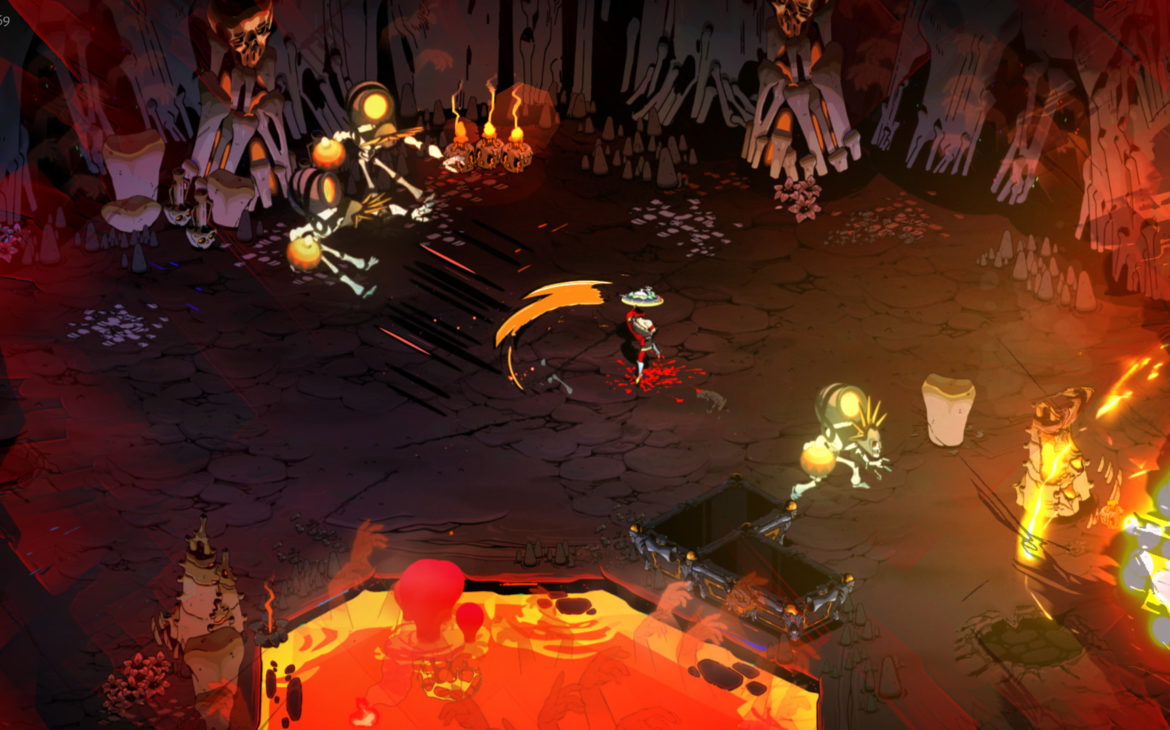
And it’s through that gauntlet that Zagreus must now venture. Without the roguelite elements, this would be your average Greek-themed adventure game. But the difficulty is high, the chambers are tough and you will inevitably die. It’s as if the developers thought about roguelites, and asked, where could you die, and you’d automatically come back to life? The Underworld, of course.
When Zagreus perishes in battle, he reappears trudging out of the River Styx at the entrance to his father’s house in Tartarus. You die, you go to the underworld, but that’s where you started. It’s some kind of genius. A faultless narrative device, perfectly suited to its source material and the genre of the game. Zagreus has a kind of tired, resigned outlook on life mostly because he knows that every time he dies, he will reappear at his father’s house.
It’s also quite the family affair you see. Your adoptive mother Nyx, has called on the Gods and Goddesses of Olympus to aid you in escaping the Underworld and joining them on Olympus. These are your Aunts and Uncles, your cousins, who send you messages of support, and gift you with boons – their own godly powers and skills – to boost you through your runs. This could be Zeus’ lightning strikes added to your sword, Hermes’ speed, or Poseidon’s water.
Hades sets you up against the greatest challenge there’s ever been, escaping from the Underworld. The place is literally built to hold everyone who’s ever lived, every warrior, every genius, and yet I must be the one to escape. It’s a big deal. A gamer’s work is never done.
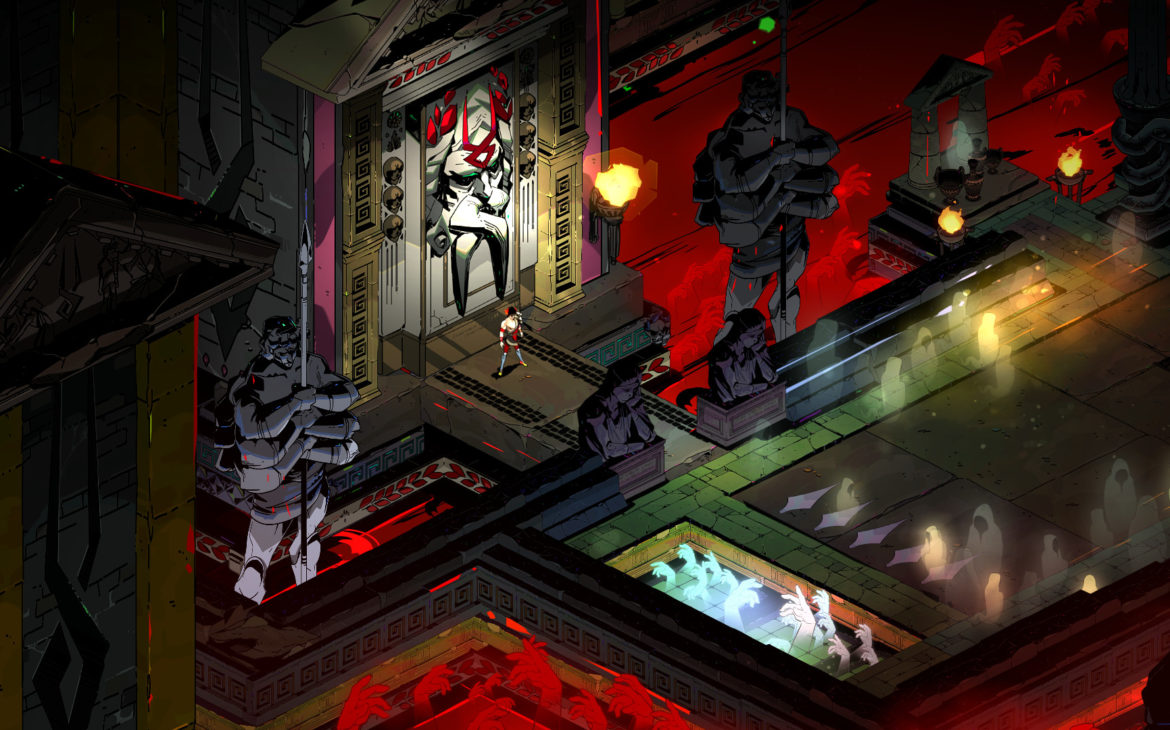
Sisyphus and his Boulder
As a procedurally generated roguelite, the gameplay is based around completing runs, moving from chamber to ever-changing chamber, trying to get to the end in one go. There are dozens of enemy types arrayed against you, four main bosses, and another dozen or so of minor bosses. Combat is fast and frenetic, demanding exceptionally quick reflexes, and some luck in the shape of the boons you are gifted.
It can be difficult, and certainly, the difficulty will mean you die a large number of times before you actually escape the Underworld. But escaping the first time is only half the story. There’s a lot of incentive to replay and complete the process a lot more times afterward to reveal all the main plot, myriad side content and character stories.
With each death you return to the House of Hades, a hub area where you can speak to other characters, give them gifts and receive Keepsakes, permanent upgrade items you can use one at a time. Zagreus has his own room he barely uses because he’s out fighting. Here he can use the Mirror of Night to purchase permanent upgrades using the Darkness currency, just one of about ten different currencies and item types that you can collect and buy perks with during combat.
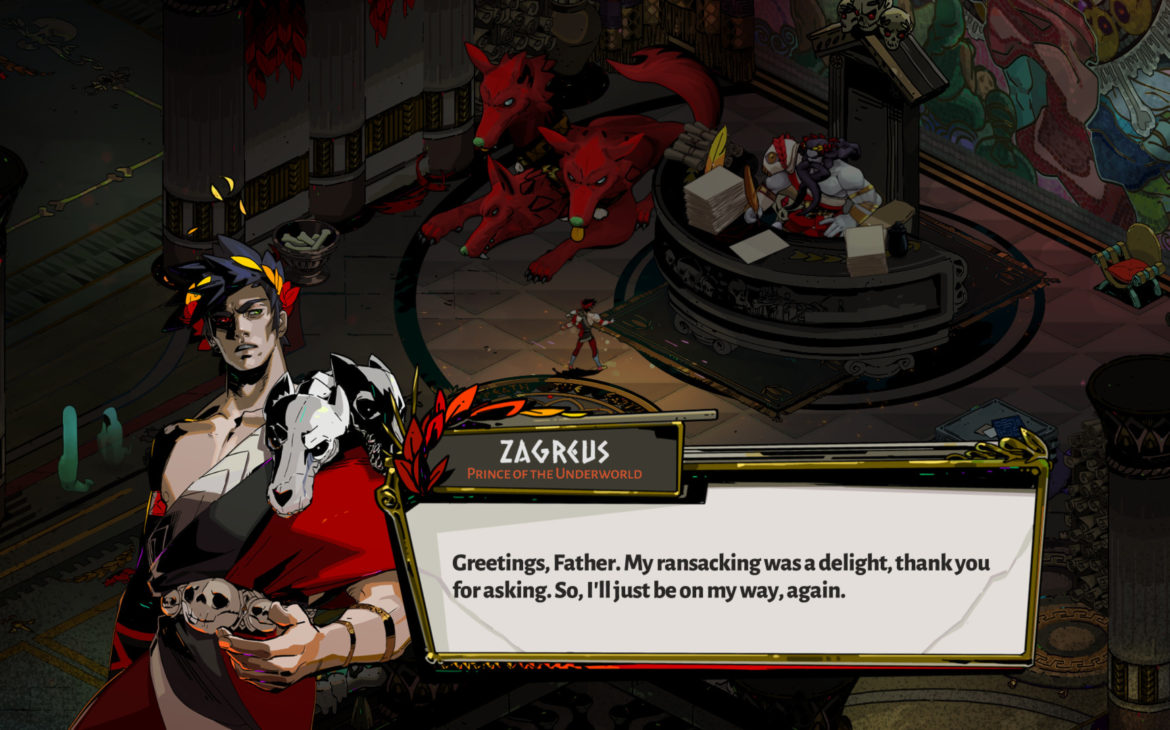
It’s with all these upgrades that you’ll then venture out again, and hopefully, each time, get a little bit further towards the finale. The final room houses the weapons Zagreus can use; six different pieces called the Infernal Arms (that once killed the Titans) that he can employ, ranging from the close quarters Stygian Blade and Twin Fists, to the long-distance Heart-Seeking Bow and Adamant Rail, to the mid-range Eternal Spear, and the unique Shield of Chaos.
Let’s talk combat. Hades equips you with a normal attack, usually with the ability to hold down the button to combo, a special attack, a dodge/dash, and a sort of long-range magic orb called a cast. Each of these and more can be enhanced and almost entirely changed by what Gods decide to show up and gift their powers each run. You might have Ares Doom skill for instance, a larger delayed hit after your first attack, but choosing whether to use this as your main attack, special or even as a result of your dash will dramatically change how you then fight going forward. Having an AOE attack on the start of your dash means you will want to dash away from enemies, but having a shunt-based attack attached to your dash, means you will be dashing towards enemies all the time.
Then you have to consider how each of those work with each of the Infernal Arms. A sword is simple to grasp, but being able to add these boons to a long-distance special creates a new way of playing. The bow and gun for instance allow you to fire Zeus’ lightning or Poseidon’s water at long range. The Shield of Chaos under normal attack stays in your hand, but on special travels around multiple opponents before returning like a boomerang. Add a lightning bolt to that and you can clear a room in seconds. Each weapon has been tested and re-tested and all have more positives than negatives.
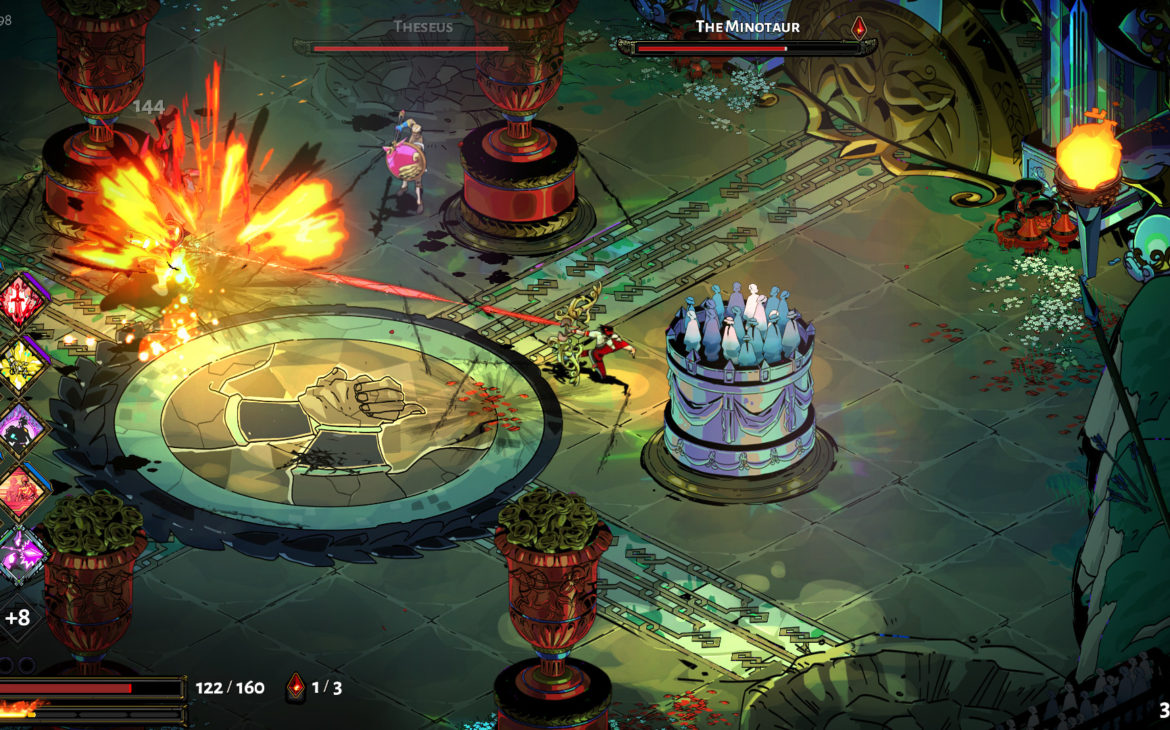
It’s this wide variety and staggering number of combinations that make the combat so playable and replayable. Even if you find a combination that works wonders, and then don’t get any of those perks again next run, you will discover brand new ones that work just as well in amazing new ways. I went from adoring the Shield of Chaos, to thinking the bow was the best weapon, before getting the Spear and changing my entire playstyle again. Each weapon, combined with each of a dozen gods, each with a half dozen unique boons per weapon, means that you won’t play the same run twice ever.
One element of combat that didn’t gel with me was Cast; throwing out a damaging red orb at enemies. The orb is then stuck in the enemy until a certain amount of time has passed or they are killed. The fact I only had one of these for a long time during learning Hades’ system meant I never prioritised using it. With leveling, the cast orbs can make those enemies weaker, and that becomes a good incentive, but overall they didn’t seem to fit with me in the way the other available attacks did.
As with any roguelite, this literal gameplay loop has to appeal to you, and Hades does its damnedest to incentivise the struggle. The unfolding story and dialogue, and the hundreds of power combinations are there to try to stave off the inevitable and eventual repetitive nature of the gameplay. There are lots of items and further boons, even floating drone-like helpers in the later stages for those who keep going. It’s also nicely written into the story that even after you’ve seen the ending and the true ending, the reason to keep fighting continues to make narrative sense.
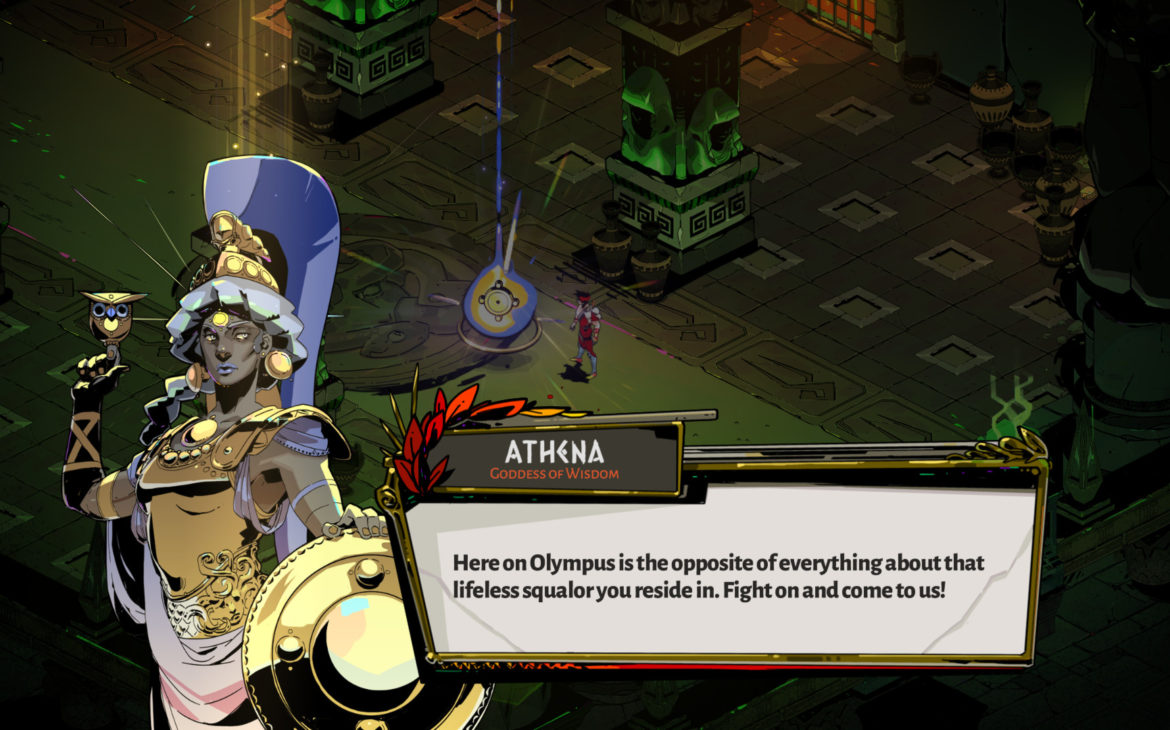
Eurydice the Muse
Supergiant games have never stinted on the beauty of their games, and Hades is probably their prettiest yet. Beautiful isometric locales from the built-up shadows of Tartarus, to the red lava and heat of hellish Asphodel, to the verdant fields of Elysium, every element looks gorgeous. It’s amazing to think how many chamber types there might be and how they all manage to fit together. Zagreus is beautifully animated in combat and every movement is a fluid silky showcase for how it really should be done. The camera height can feel a little removed from the action, but at the same time, this serves to gives you a more tactical view.
Alongside this, the character designs for the denizens of Olympus and the Underworld are really eye-catching and wonderfully original in many ways, such as Eurydice’s tree hair, and Poseidon’s watery beard. These are characters we’ve known all our lives, and culturally for thousands of years, and they can still be given new life in the right hands. That said Enemy designs aren’t anywhere near as interesting, and though they demand different tactics, they get a little dull.
Supergiant Games and their brilliant composer Darren Korb have a long-standing partnership now, and it’s once again on full display. Hades has a dynamic ear-pleasing soundtrack, with a number of fantastic discordant pumping boss tracks. It also manages to once again showcase the talents of Ashley Barrett singing another couple of haunting ballads, as she has in many previous Supergiant Games. It’s a shame that in this one they aren’t really encountered as part of a dramatic crescendo in the plot, and instead hide within the episodes with Eurydice the Muse, but still, Good Riddance is a beautiful track.
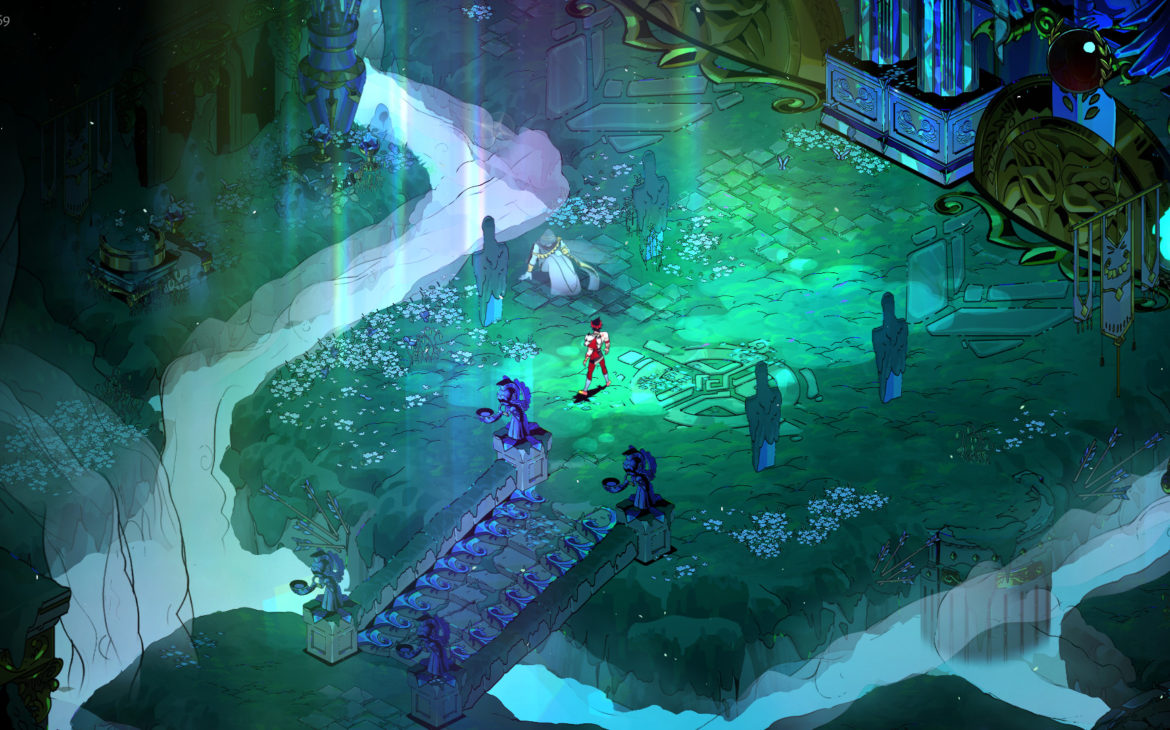
From the very depths of Roguelites, comes Narrative
Roguelites are some of the most gamified games you can have, often devoid of narrative, character and plot. So does the experiment work? Are roguelites and narrative the new standard, and a match made in heaven? Well, in the right hands yes. Hades’ bitesize plot is delivered in such an interesting and accessible manner you can’t help but get involved with all its characters. I do wish some of the meatier stories came a little earlier, as some 20 runs in you’ll have only scratched the surface. Those runs are important though, as Hades relies on its gameplay to provide most of the dramatic moments in the plot. Your first fight with the Bone Hydra for example will probably be a nail-biter. Same with later points in the game and the final boss.
The story is delivered via the dialogue and backstories of a large cast of very interesting characters. It is still largely dialogue rather than action. There are a couple of big reveals which shape the course of the narrative, and Supergiant wields a new narrative structure with assured skill, considering it’s still just one of the first games to do so. One issue I did have with the story was that it removed peril from Zagreus’ tale, simply by the fact of his returning to the Underworld each death. There’s never any reason to think the lead will die, and this removed some of the tension for me – he could always just try again.
The first time you beat the final boss will feel euphoric. I took a picture of it on my PS5, so proud that I’d finally managed. Then, of course, the modern staple of an endgame begins. Hades has possibly the best attempt at a meaningful post/end game I’ve ever encountered, continuing the plot so that you need to complete it fully at least six times to reveal everything and get the true ending, and giving you reason and means to continue every side character’s plots as well.
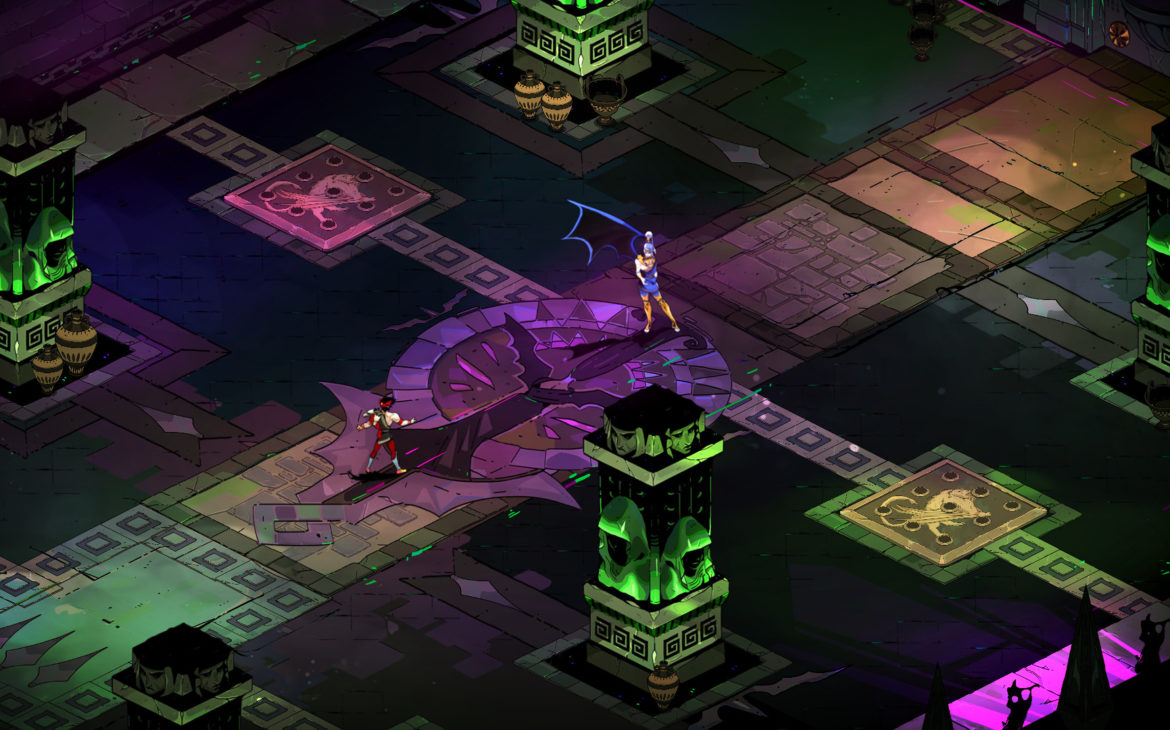
Hades is the new standard by which we measure roguelites. It manages to produce an almost infinitely replayable scenario with combinations of powers that are constantly dynamic and always balanced. The perfect distillation of one-more-time gameplay. It crafts its narrative as deliberately as possible around the conceits of videogames themselves and the particular nuances and realities of roguelites. The narrative is always interesting, blending a modern touch with ancient mythology. In the hands of Supergiant Games the writing, dialogue and performances are deceptively simple and brilliantly realised.
Hades is the new standard by which we measure roguelites. A stunningly modern narrative scenario told in bitesize morsels perfectly designed around roguelites, it also manages to have infinitely replayable combat full of constantly changing moves and powers. It demands your skill and a lot of your time, but it rewards you by providing meaning to the grind.

Hades is available now on PlayStation 4, PlayStation 5 (review platform), Xbox One, Xbox Series S|X, Nintendo Switch and PC via Steam.
Developer: Supergiant Games
Publisher: Supergiant Games, Private Division, Take-Two Interactive
Disclaimer: In order to complete this review, we were provided with a promotional copy of the game. For our full review policy, please go here.
If you enjoyed this article or any more of our content, please consider our Patreon.
Make sure to follow Finger Guns on our social channels –Twitter, Facebook, Twitch, Spotify or Apple Podcasts – to keep up to date on our news, reviews and features.
